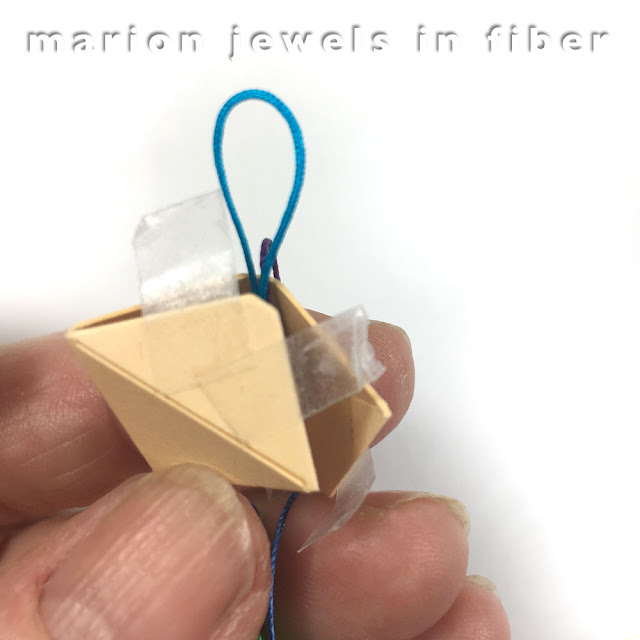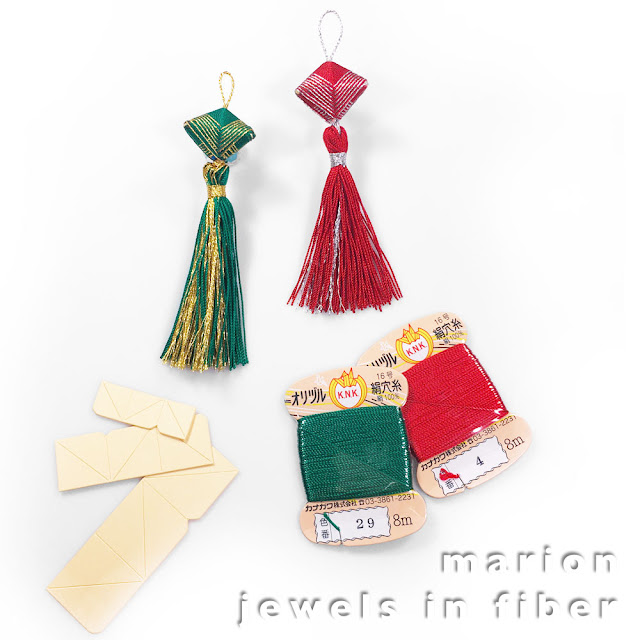In this final part of the Sankakusui-Koma tutorial we will wrap the triangular bi-pyramid with the silk thread. This picks up from the previous post...
1. If you did not secure the silk thread for wrapping before closing the 3D shape, use a piece of double stick tape as shown above. Work with the thread right out of the spool or card.
2. Secure the thread along one of the top spine with the thread coming out close to the top loop.
4. Go around the the point (blue arrow) and go back towards the loop. The thread does not need to be flushed against the spine, this will get covered later with thread wrapping.
6. Now go around the last point.
7. Continue the wrap following the thread shown with blue arrows. Go around each points keeping the thread right next to each other.
8. As you continue you will see how the thread covers over the top edges and it crosses over at the middle on the sides of the triangular pyramid.
9. To add a new color, or switch colors, use a piece of tape.
10. For this design, continue with both thread colors, keeping one on right and one on left, so they are side by side and do not cross over each other.
11. When the shape is covered, cut the thread off the spool and card. Stitch it underneath the silk wrapping up towards the bi-pyramid edge, then entering back towards the tassel but entering 2 or two thread over. Cut the ends.
Notes, Options and Alternatives
Try any leftover thread you have. So far besides all the tops shown in the tutorial with the material listed, I also made a larger top with a 2 inch by 6 inch rectangular base with Madeira Silk Floss and Metallic Thread. I found the Madeira Silk Floss a bit matte, the metallic thread was perfect. I will keep posting more photos and suggestions. I plan to make a lot more as they will be part of my gift wrapping this year.






















































